Virtual Realities
Thief, VR and Thief VR
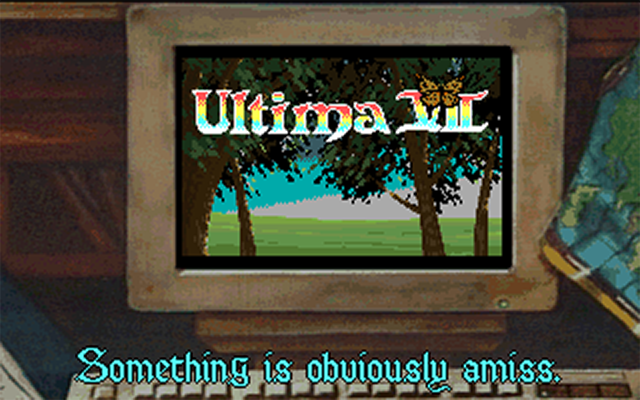
Gemini Twins
Ultima 7, a top-down game in the Ultima series released in April of 1992, is perhaps most immediately notable for its truly disorienting camera perspective. If you can get past that, you’ll also find Ultima 7 is notable for the fidelity of its systems (fidelity defined in this essay as some combination of complexity, believability and universality in a given thing’s presence / application, for ease of discussion). Ultima 7 of course had all the standard RPG features that were expected at the time: NPC conversations, trade, combat, party recruitment, exploration, etc, but it's what it added to the series that remains impressive to this day.
Ultima 7 added NPC schedules, which allowed for different NPC behaviours depending on both time of day and weather (both of which were also added in this release). A new NPC bark system allowed NPCs to converse with one another in real-time without player input. Most impressively, nearly every element in the game was interactable in some way, whether it be blowing the bellows of a forge, cooking food in an oven, or, most impressively, the ability to rotate and move pieces of furniture by simply by clicking / dragging them. A clip from Baldur’s Gate 3 went viral a couple years ago that showcased the ability for players to stack boxes on top of one another, enabling their characters to scale said boxes and then jump over an otherwise impassable wall. That exact behaviour is in Ultima 7 via it's furniture manipulation system, its lack of actual 3D geometry be damned.
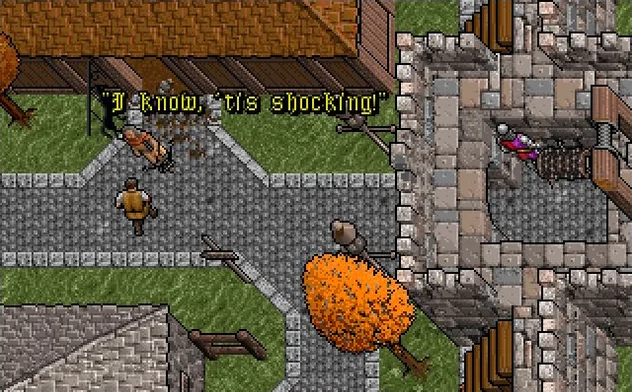
Ultima 7 is also notable for releasing one month after a different Ultima game, one which has a slightly more individualized legacy. Ultima Underworld was a first person RPG / dungeon crawler set in the Ultima world, once again including all of your standard features (combat, conversation, exploration, secrets); It was also, notably, the first true first person RPG / dungeon crawler.
Unlike previous games of its ilk, which operated on fixed grids, static visuals and cardinal directions for movement, Ultima Underworld had what we would consider fully modern freedom of movement, even including looking up and down (a genuine technical achievement for the time). This not only allowed players to admire the distinct floor and ceiling texture (also an achievement), but was functionally required because level design was also highly vertical, including stairs and jumps over gaps. You could even swim in water, which realistically (if jarringly) bobbed the camera as though you were struggling to stay afloat. For full context, Wolfenstein 3D, the game most often credited with introducing this style of 3D, first person graphics to video games, released 2 months after Ultima Underworld, and with both lower visual and systemic complexity to boot (no offence to Wolfenstien).
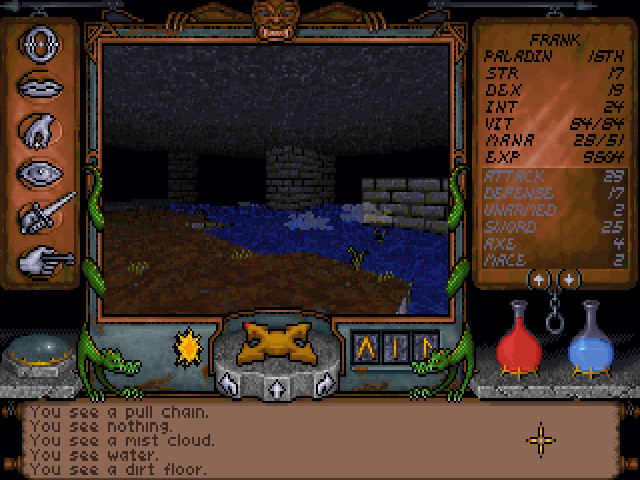
From a modern vantage, Ultima 7 and Ultima Underworld sit in almost perfect contrast to each other: 7 was interested in a sort of mechanical fidelity and simulationist oriented immersion, while Underworld was interested in visual fidelity and perspective oriented immersion. The result is both being major technical / gameplay marvels while also both having severe drawbacks, drawbacks that their temporal twin excelled at. The question that must have been on everybody’s lips, “What if you could pair the mechanical fidelity of Ultima 7 with the visual fidelity of Ultima Underworld?”, is one that still resonates today.
But to limit their impact to RPGs is to underplay their hand. Because Ultima Underworld is also considered the first true immersive sim. Immersive sims are a genre in their own right, complete with tropes, trappings and traditions, but in many ways immersive sims also represent a set of ideals, even a sort of design ideology. While Ultima Underworld might be the first immersive sim in terms of genre, it AND Ultima 7 together express the ideology that underpins the immersive sim.
The goal of any immersive sim is, at its core, to build a Virtual Reality, i.e a gameplay space that feels truly real and reactive to both player and internal action. This requires not just a simulational fidelity that can fully account for all agents in the world, but also visual fidelity that allows the results of those simulations to be visible and parsable to a player, which in turn gives the game a sense of lived reality, almost as though you are peering into this other world through the window of your screen. In turn, this also requires an interactional ease so that players can engage with this world in a naturalistic way, alongside a strong narrative that can support all actions and actors within it.
This approach to game design, and this idealized vision of what a game could be, is what many of the developers of Ultima Underworld, including the likes of Warren Spector, Paul Neurath and Doug Church, would go on to pursue. In that pursuit, they would work on some of the most important titles of the immersive sim canon, and in turn, some of the most important games of the medium: System Shock, Deus Ex and, my personal favourite, Thief.
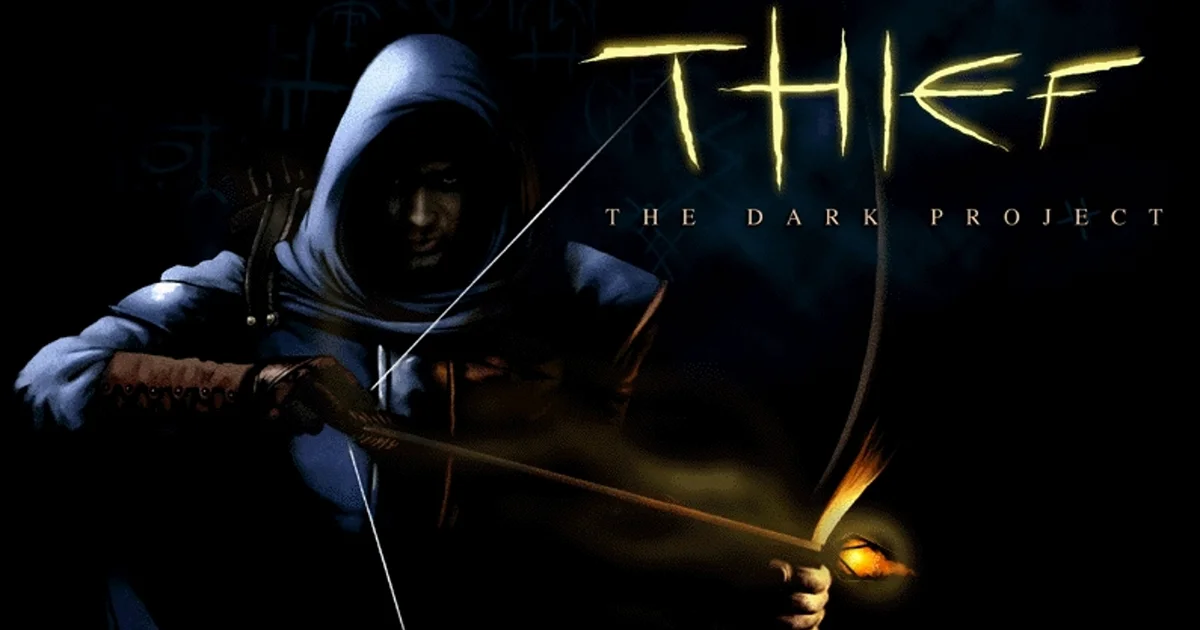
Who's afraid of Thief VR?
“Why bother being upset about Thief VR (aka Thief VR: Legacy of Shadow)?” is a perfectly reasonable question to ask; it's one I’m struggling with myself as I write this, and in trying to answer it, I have found that it’s quite a difficult question to answer without context. Without context, Thief VR might as well be any of a number of random video game franchises with a VR spinoff.
So, I like Thief 1 (aka Thief: The Dark Project released in 1998) alot, it being an incredibly designed object in nearly all ways, title included. It’s fun to be a weird freak sneaking into the homes of the rich, fun to steal a key or coin purse off the back of a yawning guard, fun to use a water arrow to douse out a fire. Even the setting, a city simply called “The City” where fantastical elements have run head-first into an industrial revolution, is one that’s both full of character and intrigue while also constantly justifying and fueling the gameplay in really novel ways. Even if you put aside all the history that led up to Thief 1, or all the legacy that Thief 1 has come to have, Thief 1 would simply be a great game that’s worth playing today. With all that said, I’ve also never finished Thief 1.
The same goes for the rest of the games in the series, all of which I've also played and never finished. I took on this task initially as part of a project for a class I took on Immersive Sims (shoutouts and credit go to Matthew Weise, whose teaching and expertise informed large swaths of this piece), and as a result I can give a broad but solid enough summary of the history of the rest of the franchise:
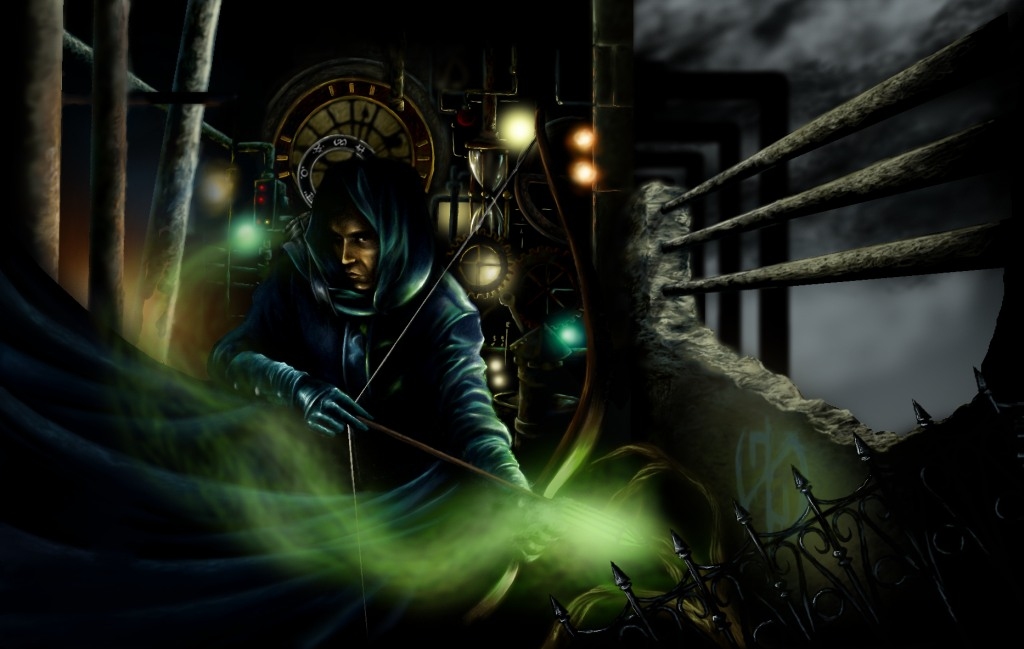
Thief 2 (aka Thief 2: The Metal Age, released in 2000) is essentially just Thief 1 but with more levels and and more refined systems / focus (a significant reduction in zombie fighting, for example). It's just as good a title as Thief 1, possibly even better, if also just a mostly straightforward iteration.
Thief 3 (aka Thief: Deadly Shadows, released 2004) was made in the dying era of the original immersive sims, where the constraints of the OG Xbox combined with a commitment to graphical fidelity and gameplay ease, leading to a dumbing down of simulational complexity. While Thief 3 does have it's standout moments and ideas, and is in many ways still a perfectly adequete title, it's mostly agreed that it failed to live up to the heights of the prior titles.
Thief 4 (aka Thief / Thi4f, released 2014) was a PS3 / PS4 bridge title that basically doubled down on everything that led to Thief 3 being so poorly received. While undeniably quite pretty at times, it's also significantly more constrained, whether it be in its highly linear level layout or even just its restriction of basic actions like jumping or utilization of rope arrows. Combine this overall approach with a highly intrusive but not very compelling story, and Thief 4 unfortunately has few redeeming qualities, especially when compared to both it's forefathers, and even it's contemporaries.
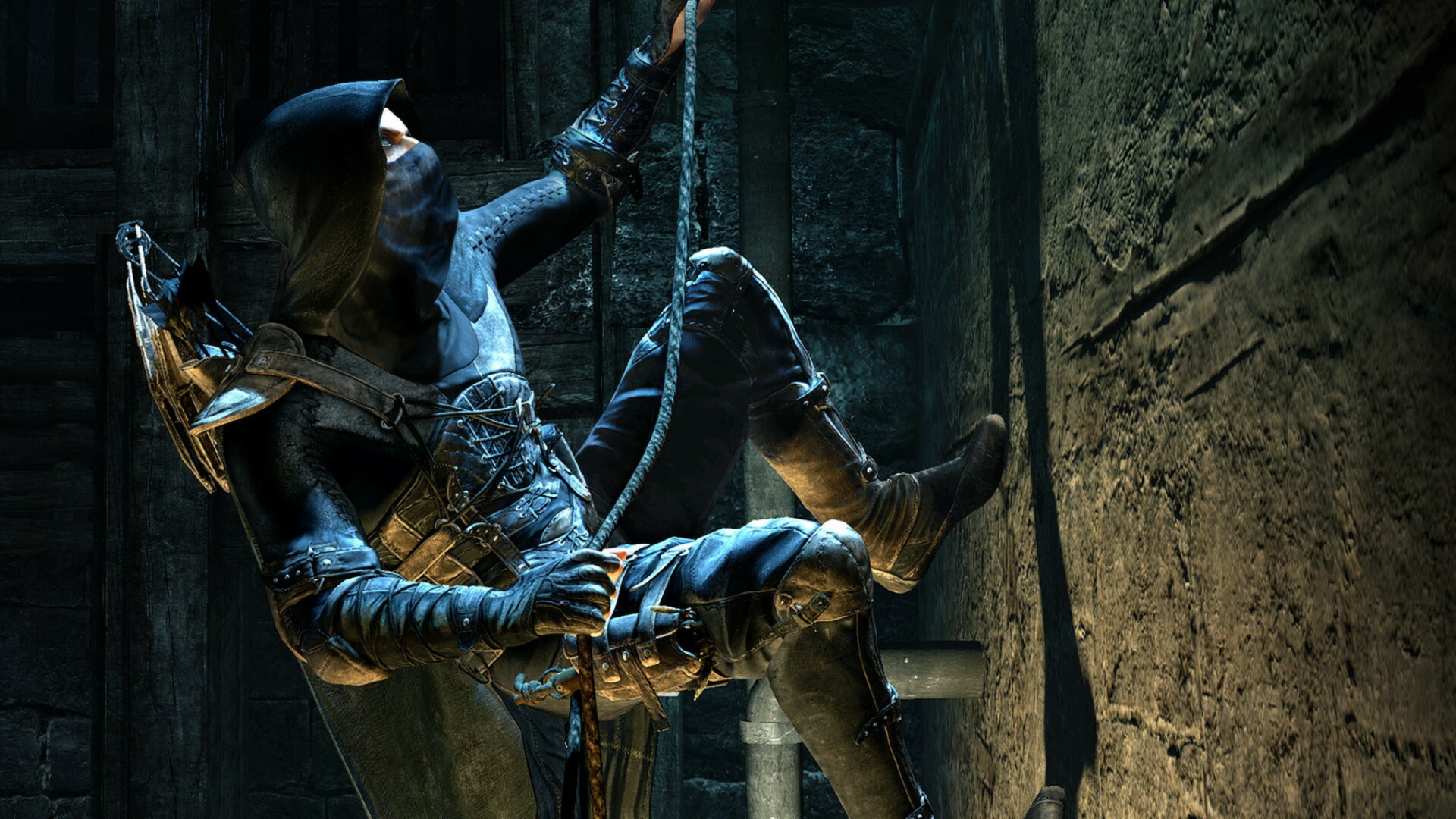
What really damaged Thief 4's reception, and what would thus help put a nail in the series’ coffin, was that the video game Dishonoured had released two years prior. Dishonoured was a stealth oriented immersive sim that was an explicit spiritual successor to Thief, one made targeting the same audience as Thief 4 and with many of the same hardware and market-oriented constraints. Yet, it also managed to maintain Thief's systemic complexity, further expanded on the player's agency and impact on the world, and all while still allowing for that console oriented ease of play. The result was that Thief, as a franchise, was ultimately devoured by its own children.
Now, 10+ years since the last Thief game, the series returns in the form of a VR game. If you have this aforementioned knowledge, this comeback is notable, surprising even, but still not immediately upsetting. This is a game series with only 4 games in it, released over a decade and a half, with the last “good” one being released during the Clinton administration. At best, Thief VR could be taking one of the best games ever made and combining it with the affordances of new hardware, new control schemes and a whole new perspective. At worst, Thief VR will end up being just another bad / dissapointing Thief game, of which there are many. With that possibility space known, and neither outcome truly all that egregious, is there anything to really be upset about?
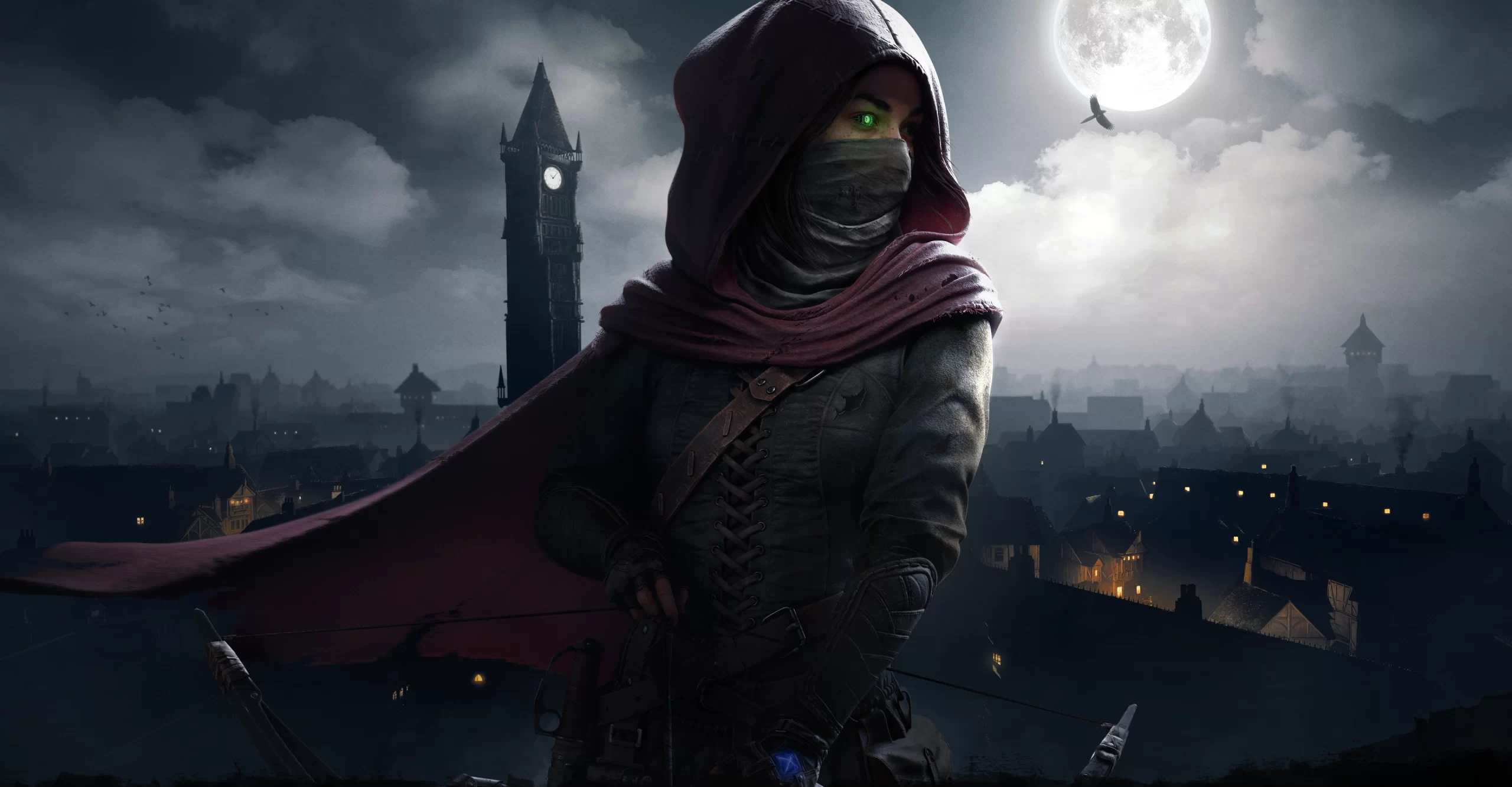
Displacement
When Half Life: Alyx was announced, an unexpected VR entry in a franchise long-thought dead, many fans were upset. It’s easy to see why. The Half Life series to that point was almost universally excellent, telling a compelling, linear and famously incomplete story across multiple titles, all alongside strong gunplay, set piece design and major technical / design innovations with each major release. In this context, having a significant follow-up title be restricted to PC VR was a sort of nightmare. PC VR is expensive, not just in the basic costs to buy everything required, but also in terms of the real estate required to play, and even time / technical investment to set it all up. And none of that is to mention that the fundamental experience of play on a controller / keyboard + mouse is just staggeringly different to a VR one. Some people can’t even play VR games for accessibility reasons, whether it be motor control issues to motion sickness or more. So the question Half Life: Alyx left many with was just “why did Half Life need VR?”. For some, there was not a clear or convincing answer, at least not beyond Valve’s massive investment in VR hardware / software, and it thus far being lacking in “killer apps”.
I don’t like playing devil’s advocate, but I do think there were compelling reasons for Half Life to transition to a VR title. To understand these, we need to identify what the main ludic goals of the Half Life series were up to that point.
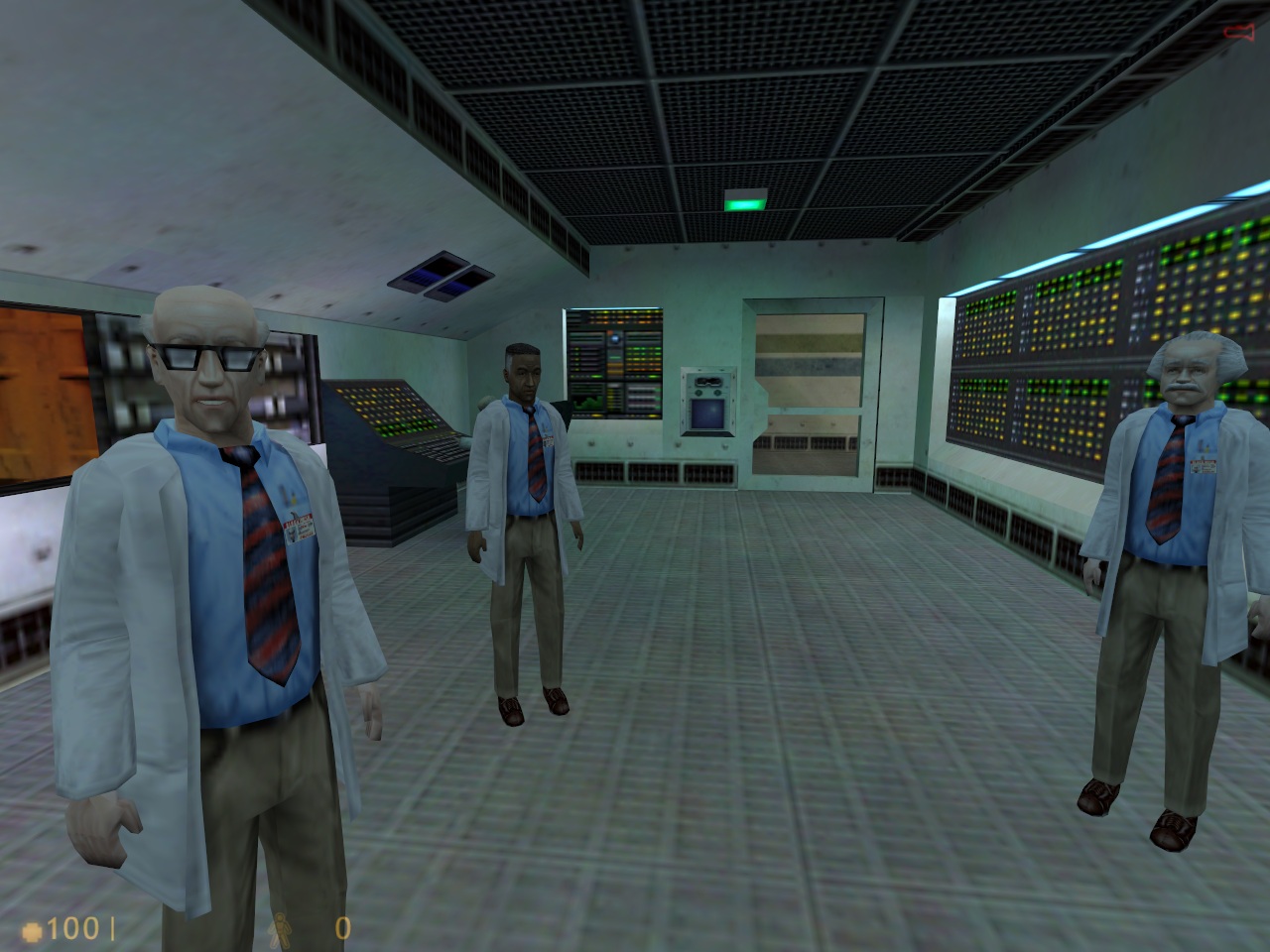
Over the course of the Half Life series, there’s a central design comittment to what we could term "ludonarrative immersion": a notion that the player should always feel as though, beyond simply playing the central character, they in some sense are the player character. This is achieved by having the player character only perform gameplay verbs the player has access to, and only at the player’s request. Furthering this idea, there is a notion that the world should always react to the player appropriately, and, bar major edge cases, the player should feel enabled to take whatever route through a situation that they see fit.
The games achieve this in many ways, but I'd argue the main throughline is that they are never explicitly prescriptive about what the player should do at any point, instead being suggestive. This is to say that while game may kill or soft-lock the player if they refuse to engage properly with a given scenario, these outcomes are are usually presented a simulationist comeuppance to the player’s actions / inaction.
Take the now iconic moment the player is asked to throw a can in a trash can early in Half Life 2. While this is required to advance (because Valve wants to teach the player about physics interactions), it's not explicitly displayed as an objective anywhere on screen. Instead, a guard asks the player to perform the action, and they diegetically block the player’s forward progress until they complete the task. The player technically has only one meaningful option: Throw out the can, but the world will realistically react to other actions the player might take. For example, while the player can’t refuse to throw out the can verbally, because there is "speech" verb in Half Life, the player can just choose to not throw the can away. The guard will continue to not allow passage if the player does this, yes, but ultimately that's a reasonable response in the context of the game. The player may also choose to have a more violent response, to attempt to push past the guard or even to throw the can at them, and the result is that the guard will push or even fully attack the player. What this small sequence does is help to establish a ludonarrative guideline for the player to follow: That the player's play will be taken seriously by both the game’s narrative and systems.
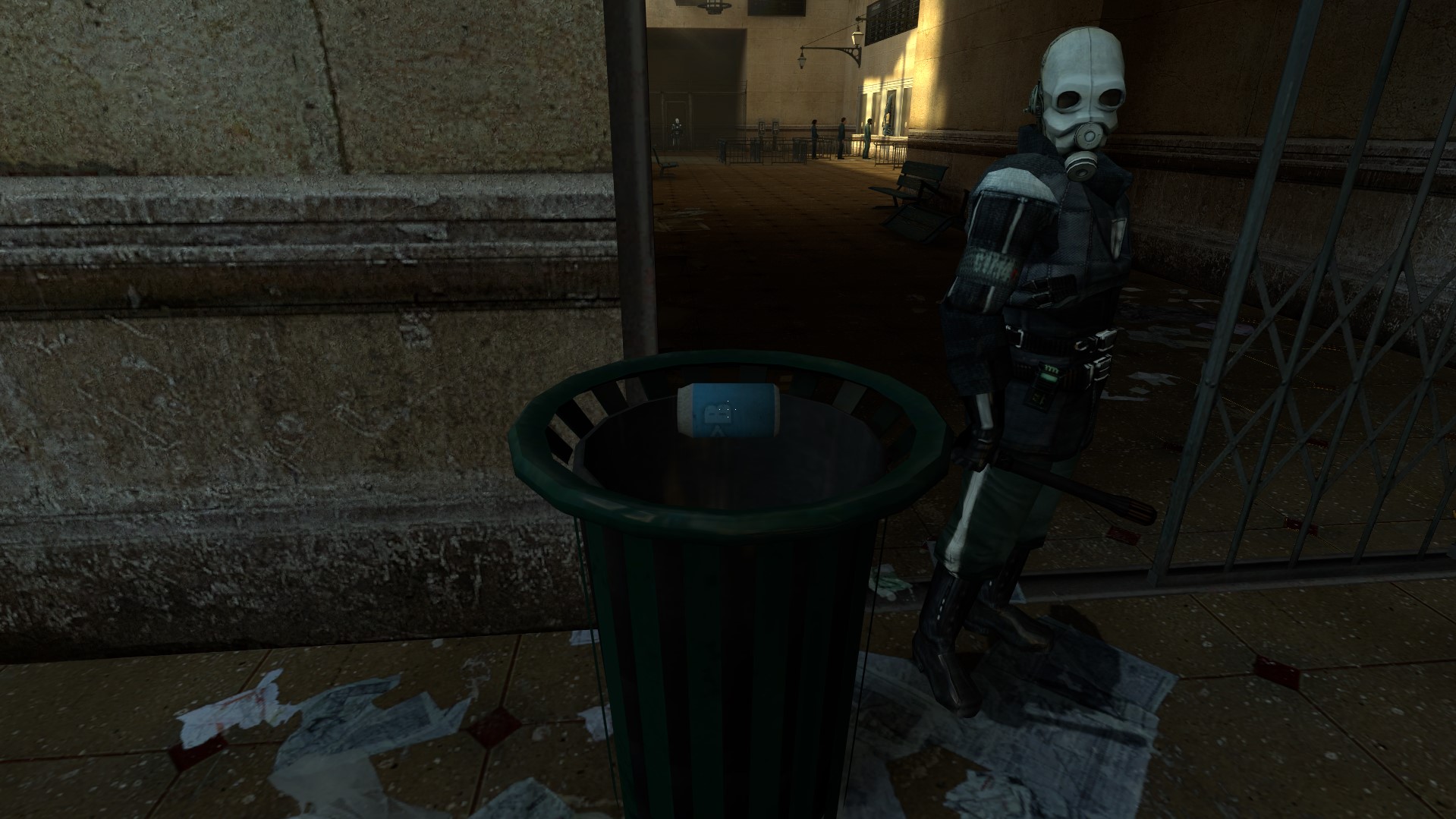
When we consider the technology of VR through this lens, that Half Life desires both high levels of player expressivity and gameplay reactivity, one can see the reasoning for bringing Half Life to VR. VR allows for the player to be expressive in truly novel and personalized ways while also allowing game systems to fully account for those actions and react accordingly. Half Life: Alyx in turn dooes allow for a “true” sense of ludonarrative immersion, not just in the sense that the player’s primary senses are engulfed by the world of Half Life, but that it also allows for this extreme expresssivity and reativity.
The reveal trailer for Alyx perhaps shows this best, showing the player using their arms to sweep items off a shelf, each item reacting via a highly advanced physics system, before the player finds some ammunition for their gun and picks it up with their fingers. That level of tactility, just a simple sweeping motion, is something so personalized and unique to VR that it would be nearly impossible to pull off via another control platform, and certainly without significantly greater difficulty to control it. But most important is that reactivity: The game responds to the simple flick of an arm or fingers being pressed together. Characters follow the player’s literal head, or respond to their actual eye-line. VR helps to center the player experience in play, to ground their actions in the world and to fully enable them to be expressive actors within it. That is why Half Life found it’s way to VR: Because the goals of Half Life not just as a series, but as a set of design goals, align with and are enhanced by the affordances of VR.
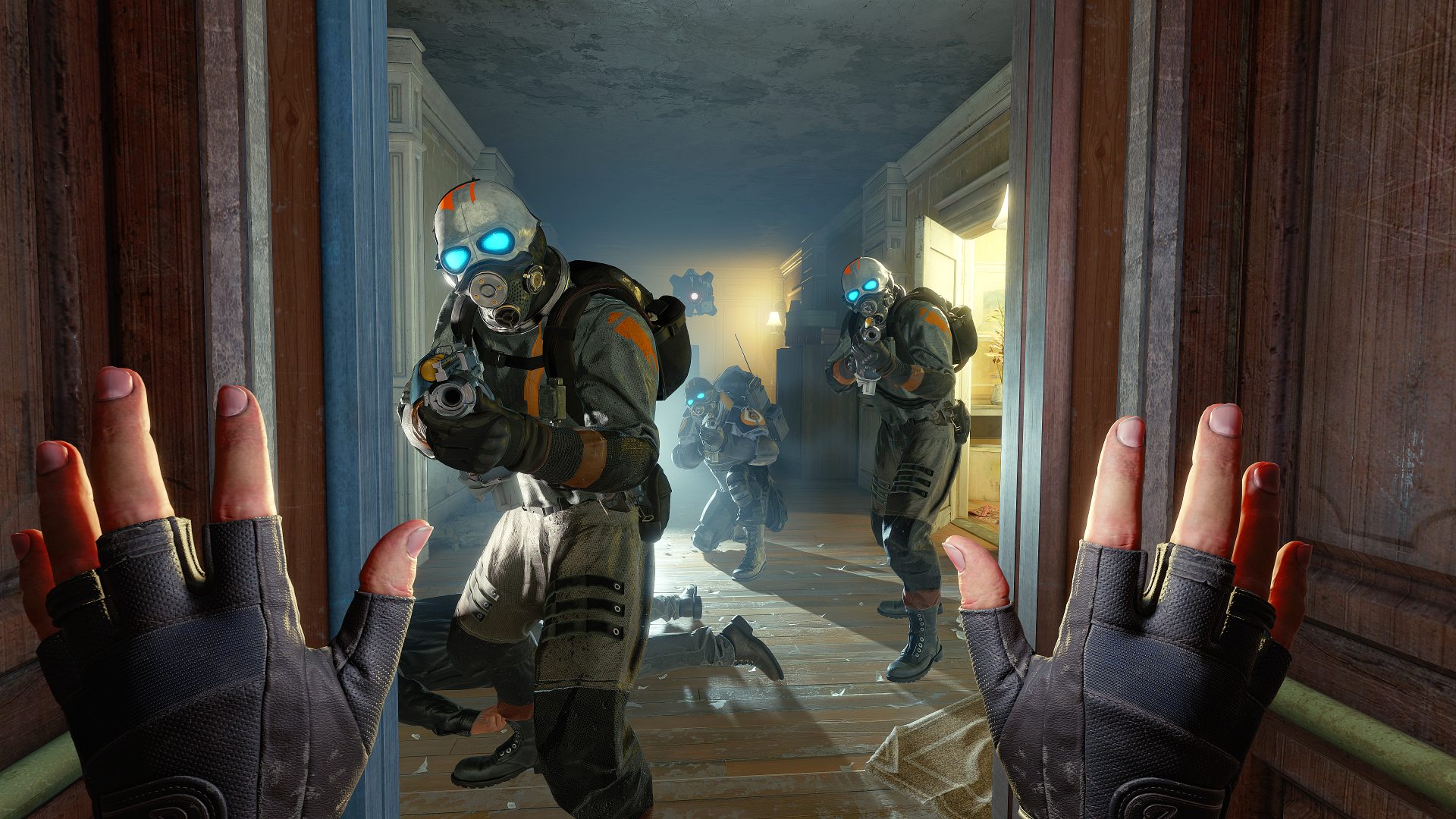
When I look at the currently available marketing materials for Thief VR (which are admittedly slim), alongside my knowledge of previous titles, I keep returning to a simple question "Why VR?"
I don’t mean this in a logistic sense because I am fully, deeply aware of how difficult it is to be making games right now. I cannot emphasize enough that I am very happy for the team of people who are getting to make, and get paid for making, Thief VR, and I hope none of what I say here is taken as an attempt to diminish their efforts, nor deny their ability to work. I also would not be at all shocked to learn that a new Thief game only exists because it’s in VR, with the current nature of funding and franchising not allowing it to exist otherwise.
Yet, when we look at the history of Thief as a franchise, it’s simply hard to have faith that a VR conversion is what the series needed. This is a game franchise that was at its most compelling on the computers of the late 90s, where janky controls and muddy visuals don’t just not diminish what was on offer, but in some cases enhance it. This is not to demean Thief’s technical chops either, as it was undeniably cutting edge on release, and it's notable that we could say the same of Thief VR. Yet, when we look at the trailer (currently the only gameplay we have), there’s an odd sense that, in spite of the technological and interaction-based affordances of the new hardware, nothing has really changed.
You are still sneaking around in the dark, still stealing coin purses from guards, still putting out fires with water arrows. In fact, some of the simulational dumbing down of Thief 4 might even be present re: rope arrows (In Thief 1 these could be utilized on any wooden surface, whereas Thief 4 restricted to specific pieces of geometry).There’s a sense that Thief VR is a game whose whole premise is founded on “What if Thief, but VR?”, and it’s not hard not to see that impulse the same way that Thief 3 was “What if Thief, but on a console?” or Thief 4 was “What if Thief, but for the masses?”. Not an inherently faulty idea, not even ill-conceived. But without a strong grasp on what makes Thief good, nor without a meaningful answer as to why Thief benefits from a VR iteration… I find it hard to be excited.
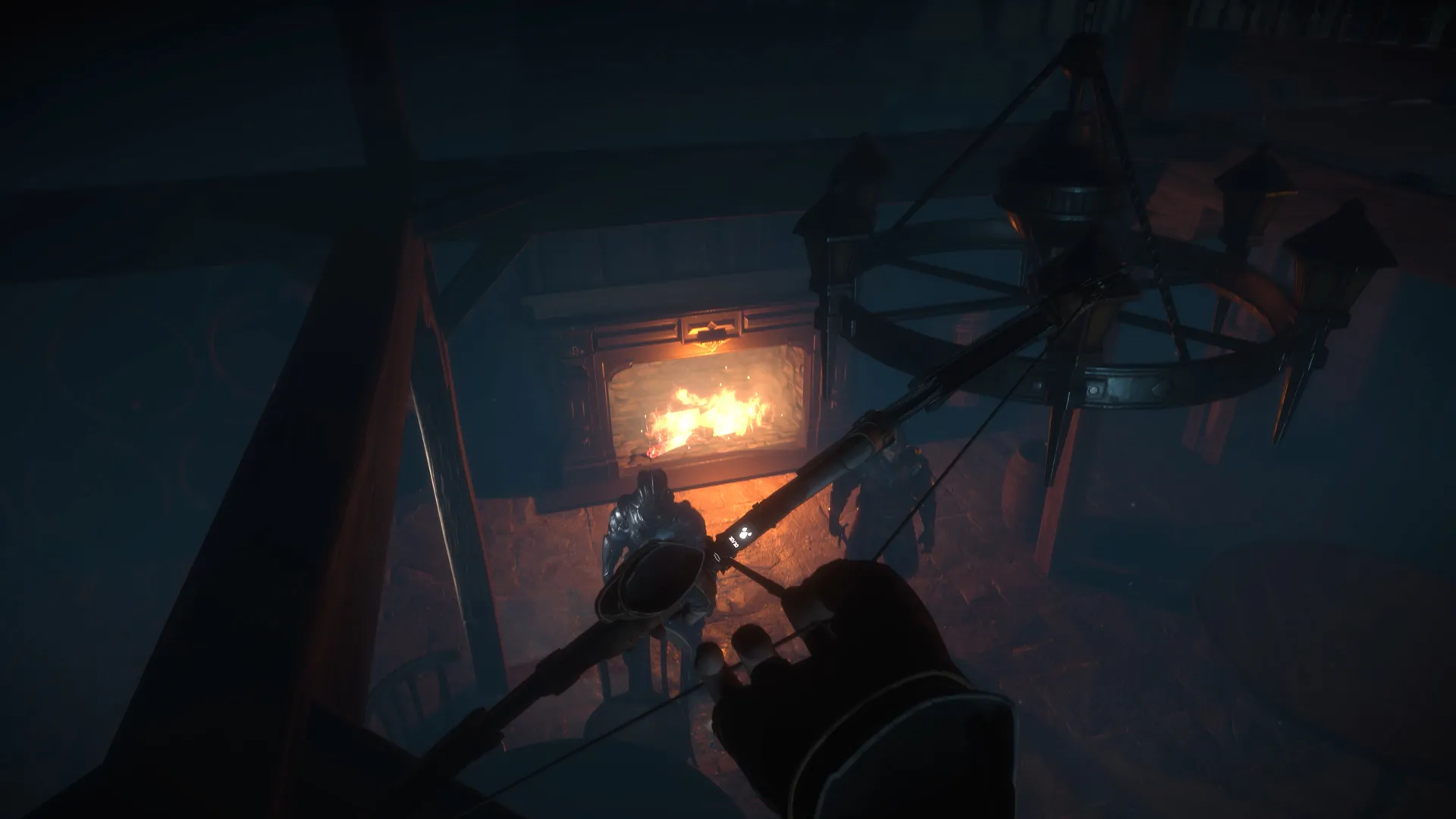
Dissapointing Diamonds
Jurassic Park: Trespasser, released the same year as the original Thief, was an undeniable, catastrophic failure in just about every way. But my god is it a fascinating failure. Trespasser was an immersive sim in the ideological sense, made by developers who had worked on Ultima Underworld and System Shock. But it is not a immersive sim in the genre sense, these developers not content to rest on their laurels and simply port over those ideas or interfaces to the Jurassic Park universe. Instead, they sought to create something entirely new.
Trespasser is maybe most famous for being the game where, to check your health, you need to look down at your character's boobs. It’s a first person, fully 3D game, and in it you play a woman called Anne who, critically, has a heart tattoo on her left boob. Take damage, and that heart tattoo begins to fill; if it fills all the way, you die. This idea started with the developers not wanting any explicit UI elements, which is a perfectly reasonable design goal, and that idea's implementation is far less egregious elsewhere in the game, such as Anne verbally calling out how many bullets are left in a gun each time she pulls the trigger. But the boob tattoo is an implementation that is so juvenile, so exploitative, that somehow it also feels too dumb to be fully mean about it. And this is Jurassic Park Trespasser in microcosm: A game where reach consistently exceeds grasp to truly abysmal result.
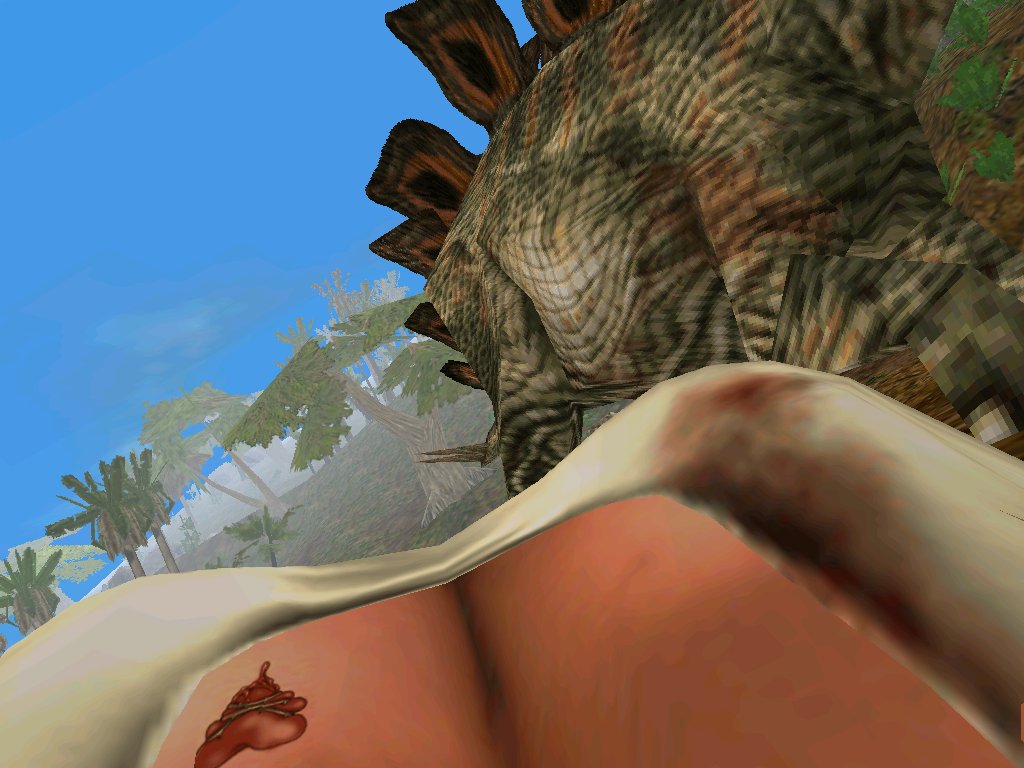
Trespasser was also trying to be one of the first games to ground all gameplay in a physics engine (Gabe Newell would even go on to cite Trespasser as reference for Half Life 2’s physic’s based gameplay), while also allowing for an incredibly wide range of player expression. The result is that essentially every object in the game is treated as a physics object, guns included, which the player can manipulate with their in-game hand. That hand’s position on screen is controlled with the mouse, both the hand and arms rotation can be controlled indepedently, and the player is able to use their hand to pick up or push any of the aforementioned physics objects. All of this together was extremely novel at the time, and even today constitutes a wildly audacious series of design decisions. However, it cannot be overstated that the controls and general feel of this base, foundational gameplay is just really bad.
Consider that any sequence that requires the player to shoot a gun (one of the primary activities in the game), often requires the player to exert extreme amounts of effort to simply point the gun in front of them, let alone line up the sights to aim accurately. The game in theory also has melee weapons like bats, but these too are unwieldy as the player’s arm is essentially always outstretched directly in front of them. The result of this is that to utilize a melee weapon, the player has to spin their whole camera around at speed in order to imbue the weapon with enough velocity to do damage. If you’re wondering how the physics puzzles fair, then it’s also worth noting that given the genuine novelty of the tech, the game only managed objects with a box shaped physics collider, so the “puzzles” are mostly just re-positioning various boxes and planks to allow for forward traversal, with the added note that the realistic physics means that you move these items incredibly slowly. All of this is to say that the main gameplay of Trespasser, novel as it may be, is also just objectively awful in a way that’s still sort of shocking to see in a released game.
And yet, there's more! That prior commitment to a fully simulated physicalized reality even drives the game’s dinosaurs, as Trespasser was one of the first games to employ both ragdoll physics and inverse kinematics. The goal was to have essentially no pre-baked dinosaur animations, with every animation instead driven by internal behaviour, physics and IK. This, in theory, allows for a really robust and reactive animation system: A dinosaur might charge you but miss with its body, yet throw out it’s head to try and bite you, and if the player hits the dinosaurs head as it approaches, that blow to the head would ricochet down it's body and veering it off course before it crashes into the ground. This is all once again cool in theory, but in play it just looks so goofy. The way it seems to materially manifest in game is that a dinosaur's central body position is determined by physics and internal behaviours, but its legs just IK around as needed to give it the “impression” of standing or moving. The result is that the dinosaurs all look as though they are filled to the brim with helium while never having quite figured out how their legs work, and thus are totally susceptible to even the gentlest nudge or incline.
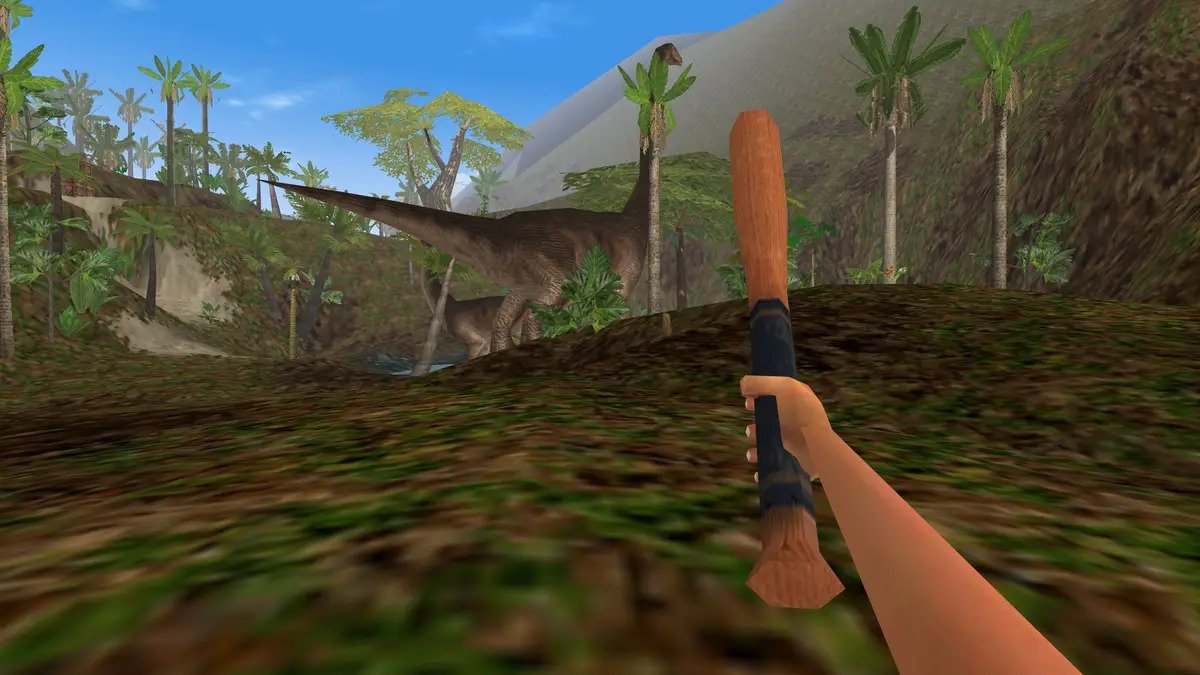
Yet, for however poorly Trespasser plays today, it's hard not to like it. I'm hardly alone in this either, as the game has its own ongoing fan community that are making patches, mechanical additions and even new levels to this day. And I think the the thing that makes Trespasser such a fascinating object to explore and analyze are those high ideals, regardless of its truly awful execution.
Look at all of Trespasser’s ideas together. A diegetic HUD, displayed entirely on the player character’s body? That’s something that Dead Space would be praised for in 2008. A fully maneuverable hand, allowing for hyper-specific and delicate physics operations? Surgeon Simulator would turn those very interactions into comedy gold in 2013. And what about physically simulated AI actors who use IK and ragdoll physics to drive animations? Just look at the majority of big budget 3D games today, where those same systems are fundamental to their graphical presentation. In fact, if you try to find a modern title that meaningfully incorporates every idea that Trespasser had, the only ones that really qualify are... high-end simulationist VR games, like Half Life: Alyx, or The Walking Dead: Saints and Sinners.
Trespasser might have been a bad game in 1998, but one can't help but wonder: What if it had simply waited 20 years and stuck itself in a VR headset? In that instance, Trespasser might have been an entirely novel, even quite good game in the early VR era of 2018. And yet, I also can't help but wonder where we’d be without it’s catastophic failure as seen in our realities' 1998 version. Would the games of today have gotten where they are without the failings of Trespasser?
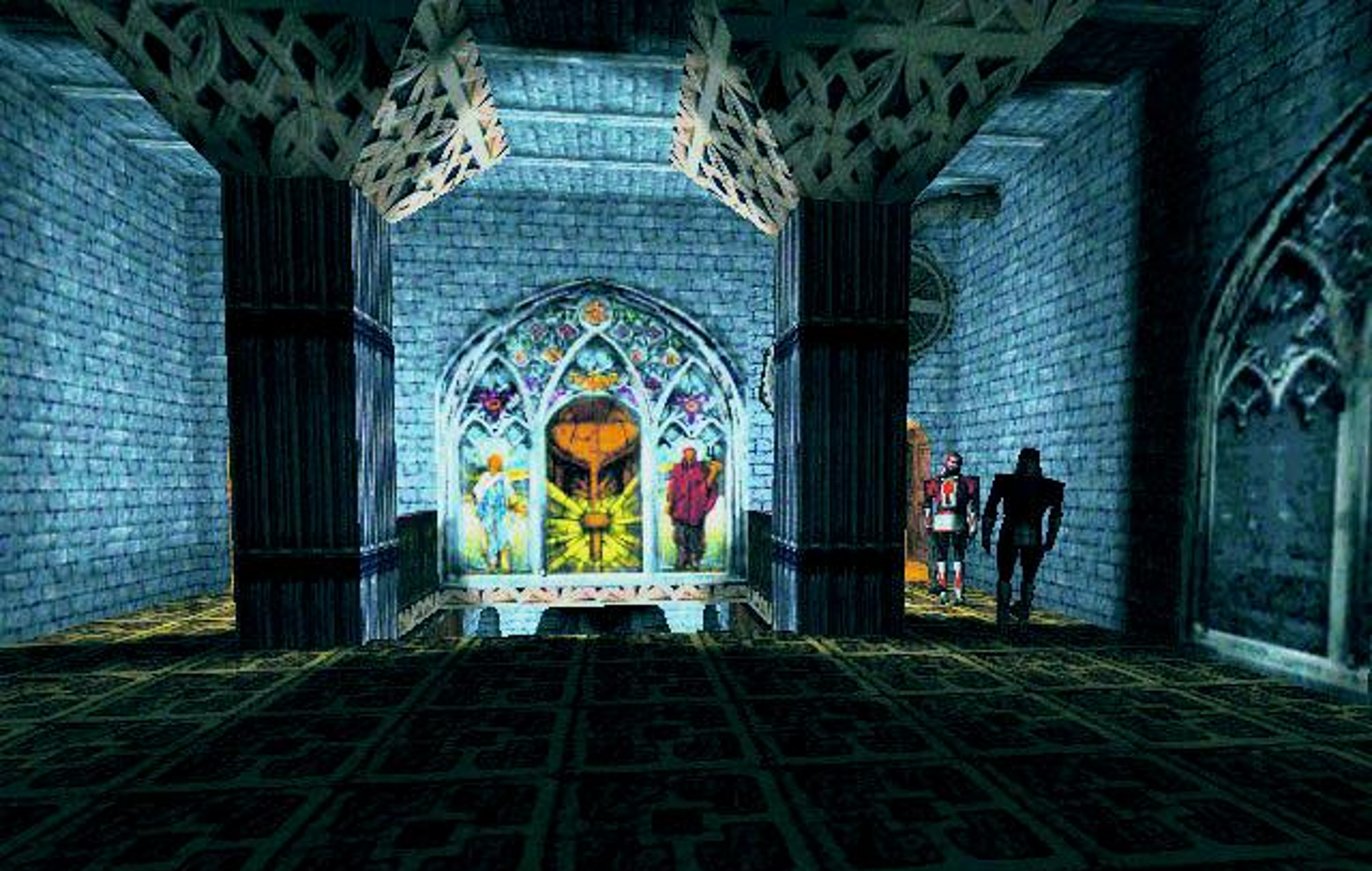
Virtual Realities
I know I’m being greedy when I ask for Thief VR to be more than "Thief in VR". We are, in so many senses, lucky to be getting another Thief game, lucky even to just be getting another big budget stab at the immersive sim genre! That it’s in VR will at least be intellectually interesting. If we’re lucky, it might even be good! And yet, I am nagged by that sense of playing it safe, of just being Thief in VR.
Immersive sims, since the twin Ultimas birthed them in 1992, have always been about both visual and mechanical fidelity, both perspective-based and simulational immersion. The two together comprised did not only comprise some grand vision of what games could be, but just on a more emotive level, were new. They did things never seen before in the medium, and in doing so widened the possibility space. When I look at Thief VR, and see just “Thief in VR”, it is that sense of “novelty”, of expanding the possibiliy space of the medium, that sticks out the most as a missing element.
Half Life: Alyx, side-steps this kind of criticism in two ways. For one, Half Life: Alyx was revolutionary, the fidelity of physics systems paired with the increased sense of intimacy and agency in world space completely changed the way Half Life played, even as it still felt undeniably Half Life. But more importantly, Half Life was always about centering the player, about grounding them in the world and making their play feel real. VR and its affordances simply align so well with the goals of Half Life that the jump, while still difficult to stomach for many, undeniably resulted in a game that simply couldn't exist in any other form, and whose strengths meaningfully aligned with both the hardware and the franchise.
When I think about Thief VR, I simply wonder if I will be able to make any of the same claims about it as Half Life: Alyx? As previously noted, most of its gameplay seem identical to previous entires in the Thief franchise, just made more tactile and present via the natural process of VR conversion. But more important to me, what does VR have to offer the immersive sim? Because, put simply, if the computational power of modern machines and the specific affordances of VR headsets are not used to expand the Thief experience, but rather to simply recreate it with a novel interaction interface and heightened sense of presence, then while I admit that sounds nice, I also have to admit that as a fan of both Thief and immersive sims, it in no way meaningfully addresses what I want from this franchise or genre.
Trespasser, for all its faults, was absolutely revolutionary at every turn. A complete failure in execution did not detract from it being a valuable artifact of design to this day, notable for the absolute depth of its ideals and its utter conviction to them. Were Trespasser just System Shock but in the Jurassic Park setting, it still would have been cool! But instead it reached. It reached as far and as deep as it could, and what it found was the future. A future that may have been out of reach at the time, and indeed is still out of reach for many in the present, but the future all the same.
When I look at Thief VR, I see the past. I see the same gameplay structures and ideas and goals as the Thief games, and in the successors to Thief, and in other VR games to boot. What if you could steal stuff in a cool city? What if you could fire a bow in VR? I know how these things feel, and I do not deny that they feel cool! But what I do not see is the future. I hardly even see the potential for failure. Thief VR will probably be fine, maybe even good. Yet I cannot help but wonder: where is the reach?
We are in the midst of an indie-led Immersive sim renaissance. Skin Deep takes the notion of an Immersive Sim and tilts it entirely towards absurdist slapstick. Gloomwood is a more traditionalist immersive sim but with extra emphasis on non-linearity and survival horror for new flavour. Cruelty Squad is an avant garde anti-capitalist art piece. Shadows of Doubt strips back on combat and focuses on mystery and procedural elements. And this is to say nothing of other notable big budget releases in the Immersive Sim canon, such as the Legend of Zelda games or Hitman: World of Assasination (which itself received a VR port).
It is into this modern context of the Immersive Sim that Thief VR arrives. It is one of the most well established and beloved Immersive Sim franchises of all time, brought to a platform that allows for more play opportunities than ever possible. And Thief VR seems to take not just all of that possibility, but that history, and ask, “What if we did all that old stuff again, but in VR?” And to that I respond that the immersive sim, and in many ways Thief itself, was never defined by aesthetics, by mechanics, by tradition or by hardware. Rather, it is defined by it's reach, it's ideals, and it's commitment to an impossible vision, a vision of a Virtual Reality. And VR simply has nothing on that to me.
